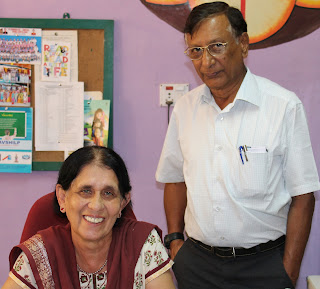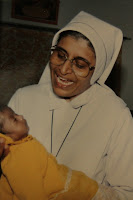Our Lady of Graces Hospital,
Sardhana, Uttar Pradesh
 |
| The Old and the New- 120 years apart |
 |
| The legendary Pilgrim Centre and Church |
About 30 kms
from Meerut town is the historic town of Sardhana *. Despite the efforts of
missionaries over the last century in education and healthcare, the community
and its neighbouring villages steadfastedly stays feudal in its approach,
especially to women and children.
 |
| SR LIZA |
 |
| Always the sunny disposition |
The sisters
of the Fransiscan congregation here have been running the health facility here
for the last three decades. A significant part in the development of healthcare
here, especially in maternal and childcare can be credited to Dr Sr Liza (Batch
of ’83). Working with this community for the last 22 years, Sr Liza has developed
what was essentially a dispensary in the 80s to a full-fledged Hospital.
The only
Sister Doctor in her congregation, the onus of the entire clinical work has
been on her in all these years. Carrying patients requiring surgery to Meerut
town through desolate terrain on vehicles, braving breakdowns and bandits, in
the initial days, she has now managed to get a well-equipped OT system
constructed at her Hospital. She cites strong support from her superior and administrator as the reason for recent improvements.
Pictures of 'Baby Nikky'- A 750 gms baby delivered and nursed to health at this centre
(from Sr Liza's cell phone)
Among the
Johnites, she is especially appreciative of Nirmal Bernadette Kumar, who has
been helping her with resources over the last many years. She is also proud of
the venture started by her classmates ( The Batch of 1983 instituted in 2010 at their reunion) to
contribute to the needs of the doctors in remote areas.
 | |||
| Visit by the Principal Dr Alfred Mascarenhas, 1991(Archives) |
 |
| Kashmir 1998- Earthquake relief(Archives) |
(Through
this blog, I will also try to acknowledge the efforts of the doctors both in
India and overseas who give their time and resources supporting these worthy
causes. Please write in mentioning more of these Johnites and doctors/
philanthropes supporting them)
*for the history buffs,do check Sardhana and Begum Sumroo on the net.

























